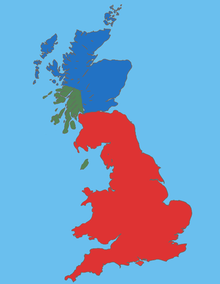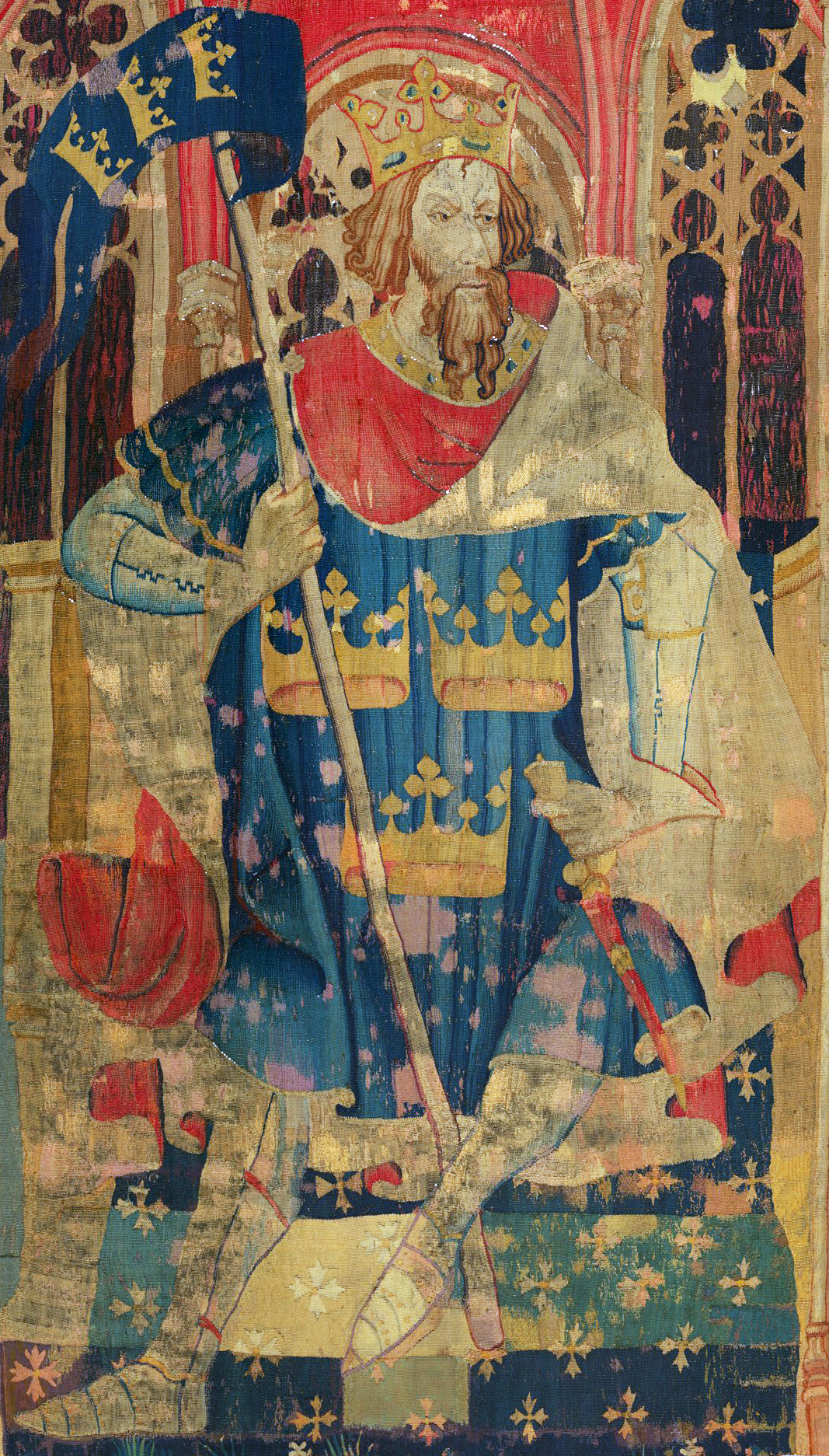|
Gwenddoleu Ap Ceidio
Gwenddoleu ap Ceidio (died c. 573) or Gwenddolau was a Brythonic king who ruled in Arfderydd (now Arthuret). This is in what is now south-west Scotland and north-west England in the area around Hadrian's Wall and Carlisle during the sub-Roman period in Britain. Carwinley, near Longtown, north of Carlisle, possibly derives from Cumbric ''Caer Wenddolau'' or ''Gwenddolau's Fort''. The earthworks at Liddel Strength is also another contender for ''Caer Wenddolau''. Men of the North '' Bonedd Gwŷr y Gogledd'' records Gwenddoleu as one of the Men of the North and thus the genealogies claim that the legendary figure of Coel Hen is Gwenddoleu's great-great-great-grandfather. Coel Hen was a semi-historical figure and legend often attributes much of southern Scotland to his kingdom. These genealogies also record the names of his two brothers, Nudd and Chof. Early life Gwenddoleu's father was Ceidio ap Arthwys and he had two brothers, Nudd and Chof. Little is known of Chof (someti ... [...More Info...] [...Related Items...] OR: [Wikipedia] [Google] [Baidu] |
Brython
The Britons ( *''Pritanī'', , ), also known as Celtic Britons or Ancient Britons, were the Celtic people who inhabited Great Britain from at least the British Iron Age until the High Middle Ages, at which point they diverged into the Welsh, Cornish, and Bretons (among others). They spoke Common Brittonic, the ancestor of the modern Brittonic languages. The earliest written evidence for the Britons is from Greco-Roman writers and dates to the Iron Age. Ancient Britain was made up of many tribes and kingdoms, associated with various hillforts. The Britons followed an ancient Celtic religion overseen by druids. Some of the southern tribes had strong links with mainland Europe, especially Gaul and Belgica, and minted their own coins. The Roman Empire conquered most of Britain in the 1st century AD, creating the province of Britannia. The Romans invaded northern Britain, but the Britons and Caledonians in the north remained unconquered, and Hadrian's Wall became the edge o ... [...More Info...] [...Related Items...] OR: [Wikipedia] [Google] [Baidu] |
History Of York
The history of York, England, as a city dates to the beginning of the first millennium AD but archaeological evidence for the presence of people in the region of York dates back much further to between 8000 and 7000 BC. As York was a town in Roman times, its Celtic name is recorded in Roman sources (as ''Eboracum'' and ''Eburacum''); after 400, Angles took over the area and adapted the name by folk etymology to Old English ''Eoforwīc'' or ''Eoforīc'', which means "wild-boar town" or "rich in wild-boar". The Vikings, who took over the area later, in turn adapted the name by folk etymology to Norse '' Jórvík'' meaning "wild-boar bay", 'jór' being a contraction of the Old Norse word for wild boar, 'jǫfurr'. The modern Welsh name is Efrog. After the Anglian settlement of the North of England, Anglian York was first capital of Deira and later Northumbria, and by the early 7th century, York was an important royal centre for the Northumbrian kings. Following the Norma ... [...More Info...] [...Related Items...] OR: [Wikipedia] [Google] [Baidu] |
6th-century English Monarchs
The 6th century is the period from 501 through 600 in line with the Julian calendar. In the West, the century marks the end of Classical Antiquity and the beginning of the Middle Ages. The collapse of the Western Roman Empire late in the previous century left Europe fractured into many small Germanic kingdoms competing fiercely for land and wealth. From the upheaval the Franks rose to prominence and carved out a sizeable domain covering much of modern France and Germany. Meanwhile, the surviving Eastern Roman Empire began to expand under Emperor Justinian, who recaptured North Africa from the Vandals and attempted fully to recover Italy as well, in the hope of reinstating Roman control over the lands once ruled by the Western Roman Empire. Owing in part to the collapse of the Roman Empire along with its literature and civilization, the sixth century is generally considered to be the least known about in the Dark Ages. In its second golden age, the Sassanid Empire reached th ... [...More Info...] [...Related Items...] OR: [Wikipedia] [Google] [Baidu] |
Northern Brythonic Monarchs
Northern may refer to the following: Geography * North, a point in direction * Northern Europe, the northern part or region of Europe * Northern Highland, a region of Wisconsin, United States * Northern Province, Sri Lanka * Northern Range, a range of hills in Trinidad * Northern State (Sudan), one of the 18 wilayat (states) of Sudan Schools * Northern Collegiate Institute and Vocational School (NCIVS), a school in Sarnia, Canada * Northern Secondary School, Toronto, Canada * Northern Secondary School (Sturgeon Falls), Ontario, Canada * Northern University (other), various institutions * Northern Guilford High School, a public high school in Greensboro, North Carolina Companies * Arriva Rail North, a former train operating company in northern England * Chemins de fer du Nord (Northern Railway Company), a former rail transport company in northern France * Nord-Aviation (Northern Aviation), a former state-owned French aircraft manufacturer. * Compañía de los Caminos d ... [...More Info...] [...Related Items...] OR: [Wikipedia] [Google] [Baidu] |
570s Deaths , a compact car
{{Numberdis ...
57 may refer to: * 57 (number) * one of the years 57 BC, AD 57, 1957, 2057 * "57" (song), a song by Biffy Clyro * "Fifty Seven", a song by Karma to Burn from the album ''Arch Stanton'', 2014 * "57" (album), a studio album by Klaus Major Heuser Band in 2014 * "57 Live" (album), a live double-album by Klaus Major Heuser Band in 2015 * Heinz 57 (varieties), a former advertising slogan * Maybach 57, an ultra-luxury car * American Base Hospital No. 57 * Swift Current 57's, baseball team in the Western Canadian Baseball League * FN Five-seveN, a semi-automatic pistol * 57 Mnemosyne, a main-belt asteroid * Tatra 57 The Tatra 57 are a series of two-door compact cars, built by Czechoslovakian company Tatra from 1932. They are popularly known by the nickname ''"Hadimrška"''. Tatra updated the model as the 57A in 1936, and as 57B in 1938. A military adaptatio ... [...More Info...] [...Related Items...] OR: [Wikipedia] [Google] [Baidu] |
Welsh-language Literature
Welsh-language literature () has been produced continuously since the emergence of Welsh from Brythonic as a distinct language in around the 5th century AD. The earliest Welsh literature was poetry, which was extremely intricate in form from its earliest known examples, a tradition sustained today. Poetry was followed by the first British prose literature in the 11th century (such as that contained in the Mabinogion). Welsh-language literature has repeatedly played a major part in the self-assertion of Wales and its people. It continues to be held in the highest regard, as evidenced by the size and enthusiasm of the audiences attending the annual National Eisteddfod of Wales (''Eisteddfod Genedlaethol Cymru''), probably the largest amateur arts festival in Europe, which crowns the literary prize winners in a dignified ceremony. Middle Ages The mediaeval period had three chronological stages of poetry: The earliest poets (Cynfeirdd), Poets of the Princes, and the Poets of Nobi ... [...More Info...] [...Related Items...] OR: [Wikipedia] [Google] [Baidu] |
Vita Merlini
, or ''The Life of Merlin'', is a Latin poem in 1,529 hexameter lines written around the year 1150. Though doubts have in the past been raised about its authorship it is now widely believed to be by Geoffrey of Monmouth. It tells the story of Merlin's madness, his life as a wild man of the woods, and his prophecies and conversations with his sister, Ganieda, and the poet Taliesin. Its plot derives from previous Celtic legends of early Middle Welsh origin, traditions of the bard Myrddin Wyllt and the wild man Lailoken, and it includes an important early account of King Arthur's final journey to Avalon, but it also displays much pseudo-scientific learning drawn from earlier scholarly Latin authors. Though its popularity was never remotely comparable to that of Geoffrey's , it did have a noticeable influence on medieval Arthurian romance, and has been drawn on by modern writers such as Laurence Binyon and Mary Stewart. Synopsis The author briefly addresses the dedicatee of th ... [...More Info...] [...Related Items...] OR: [Wikipedia] [Google] [Baidu] |
Geoffrey Of Monmouth
Geoffrey of Monmouth (; ; ) was a Catholic cleric from Monmouth, Wales, and one of the major figures in the development of British historiography and the popularity of tales of King Arthur. He is best known for his chronicle '' The History of the Kings of Britain'' ( or ') which was widely popular in its day, being translated into other languages from its original Latin. It was given historical credence well into the 16th century, but is now considered historically unreliable. Life and career Geoffrey was born between about 1090 and 1100, in Wales or the Welsh Marches. He had reached the age of majority by 1129 when he is recorded as witnessing a charter. Geoffrey refers to himself in his as (Geoffrey of Monmouth), which indicates a significant connection to Monmouth, Wales, and may refer to his birthplace. His works attest to some acquaintance with the place-names of the region. Geoffrey was known to his contemporaries as or variants thereof. The "Arthur" in these vers ... [...More Info...] [...Related Items...] OR: [Wikipedia] [Google] [Baidu] |
Merlin (wizard)
The Multi-Element Radio Linked Interferometer Network (MERLIN) is an interferometer array of radio telescopes spread across England. The array is run from Jodrell Bank Observatory in Cheshire by the University of Manchester on behalf of UK Research and Innovation. The array consists of up to seven radio telescopes and includes the Lovell Telescope at Jodrell Bank, Mark II, Cambridge, Defford in Worcestershire, Knockin in Shropshire, and Darnhall and Pickmere (previously known as Tabley) in Cheshire. The longest baseline is therefore 217 km and MERLIN can operate at frequencies between 151 MHz and 24 GHz. At a wavelength of 6 cm (5 GHz frequency), MERLIN has a resolution of 40 milliarcseconds which is comparable to that of the HST at optical wavelengths. Some of the telescopes are occasionally used for European VLBI Network (EVN) and Very Long Baseline Interferometry (VLBI) observations in order to create an interferometer with even larger baselines, ... [...More Info...] [...Related Items...] OR: [Wikipedia] [Google] [Baidu] |
Myrddin
Myrddin Wyllt (—"Myrddin the Wild", , ) is a figure in medieval Welsh legend. In Middle Welsh poetry he is accounted a chief bard, the speaker of several poems in The Black Book of Carmarthen and The Red Book of Hergest. He is called ''Wyllt''—"the Wild"—by Elis Gruffydd, and elsewhere ''Myrddin Emrys'' ("Ambrosius"), ''Merlinus Caledonensis'' ("of Caledonia") or ''Merlin Sylvestris ''("of the woods").Seymour, Page 9 Myrddin Wylt was born in 540 CE. Although his legend centres on a known Celtic theme, Myrddin's legend is rooted in history, for he is said to have gone mad after the Battle of Arfderydd (Arthuret) at which Rhydderch Hael of Strathclyde defeated the Brythonic king Gwenddoleu. According to the ''Annales Cambriae'' this took place in 573. Myrddin fled into the forest, lived with the beasts and received the gift of prophecy. Myrddin Wyllt's legend closely resembles that of a north-British figure called Lailoken, which appears in Jocelyn of Furness' 12th-c ... [...More Info...] [...Related Items...] OR: [Wikipedia] [Google] [Baidu] |
Arthurian
According to legends, King Arthur (; ; ; ) was a king of Britain. He is a folk hero and a central figure in the medieval literary tradition known as the Matter of Britain. In Welsh sources, Arthur is portrayed as a leader of the post-Roman Britons in battles against the Anglo-Saxons in the late-5th and early-6th centuries. He first appears in two early medieval historical sources, the '' Annales Cambriae'' and the ''Historia Brittonum'', but these date to 300 years after he is supposed to have lived, and most historians who study the period do not consider him a historical figure.Tom Shippey, "So Much Smoke", ''review'' of , ''London Review of Books'', 40:24:23 (20 December 2018) His name also occurs in early Welsh poetic sources, such as '' Y Gododdin''. The character developed through Welsh mythology, appearing either as a great warrior defending Britain from human and supernatural enemies or as a magical figure of folklore, and was sometimes associated with the Welsh ... [...More Info...] [...Related Items...] OR: [Wikipedia] [Google] [Baidu] |
Thirteen Treasures Of The Island Of Britain
The Thirteen Treasures of the Island of Britain ( Welsh: ''Tri Thlws ar Ddeg Ynys Prydain'') are a series of items in late-medieval Welsh tradition. Lists of the items appear in texts dating to the 15th and 16th centuries.Jones, Mary"Tri Thlws ar Ddeg Ynys Prydain" From maryjones.us. Retrieved June 16, 2009. The number of treasures is always given as thirteen, but some later versions list different items, replacing or combining entries to maintain the number. List The various treasures (''tlws'') include vessels or utensils for food and drink (hamper, cauldron, crock and dish, horn and knife), objects relating to weaponry (sword, whetstone) and to transport (halter, chariot), clothing (coat, mantle) and still other items (stone and ring, chessboard). Most of the items are placed in the ''Hen Ogledd'' or "Old North", the Brittonic-speaking parts of what is now southern Scotland and Northern England; some early manuscripts refer to the whole list specifically as treasures "tha ... [...More Info...] [...Related Items...] OR: [Wikipedia] [Google] [Baidu] |




